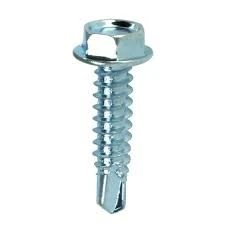concrete expansion bolt
Understanding Concrete Expansion Bolts A Comprehensive Guide
Concrete expansion bolts, often referred to as concrete anchors, are one of the most reliable fastening solutions for securing objects to concrete structures. Widely used in construction, manufacturing, and various industrial applications, these anchors provide a strong hold, allowing for the safe installation of fixtures, hardware, and other equipment.
What Are Concrete Expansion Bolts?
Concrete expansion bolts are specialized fasteners designed to anchor objects securely into concrete surfaces. These bolts consist of a threaded rod, a nut, and a sleeve that expands when the bolt is tightened. As the bolt is inserted into a pre-drilled hole in the concrete and turned, the sleeve expands outward, gripping the surrounding concrete and creating a strong bond that can withstand considerable forces.
Types of Concrete Expansion Bolts
There are several types of concrete expansion bolts, each suited for specific applications
1. Wedge Anchors These are the most common type of concrete expansion bolt. Wedge anchors consist of a threaded rod and a wedge-shaped sleeve that expands when tightened. They provide high tensile strength and are ideal for heavy loads.
2. Sleeve Anchors Sleeve anchors feature a sleeve that expands when the nut is tightened. They are versatile and can be used in various applications, including light to medium-duty anchoring.
3. Drop-In Anchors These are designed for use in precast concrete or where a flush finish is required. They are inserted into a drilled hole and require a setting tool to expand the anchor within the hole.
4. Lag Shield Anchors Lag shield anchors are used with lag screws and are ideal for lighter applications. They consist of a shield that expands as the screw is tightened, providing a strong hold in concrete.
Installation Process
concrete expansion bolt

The installation of concrete expansion bolts is straightforward but requires some attention to detail. Here’s a general guide to installing these anchors
1. Select the Right Anchor Choose an anchor based on the load requirements, concrete thickness, and environmental conditions.
2. Drill the Hole Use a hammer drill with a masonry bit to create a hole in the concrete. The diameter and depth of the hole must match the specifications of the anchor being used.
3. Clean the Hole Remove any dust or debris from the hole using a vacuum or a wire brush to ensure a secure connection.
4. Insert the Anchor Place the anchor into the hole. For certain types like drop-in anchors, a setting tool may be required.
5. Tighten the Nut Using a wrench or socket set, tighten the nut or bolt until it is secure. Be careful not to overtighten, as this could damage the anchor or the concrete.
Advantages of Using Concrete Expansion Bolts
Concrete expansion bolts offer numerous advantages
- High Load Capacity They can support heavy weights, making them suitable for industrial applications. - Durability Made from robust materials, these anchors resist corrosion and wear, ensuring longevity. - Versatility Available in various types and sizes, concrete expansion bolts can be used in numerous applications, from hanging shelves to securing machinery.
Conclusion
In conclusion, concrete expansion bolts are a critical component in the construction and manufacturing sectors. Their ability to provide strong, reliable anchoring solutions makes them an essential choice for various applications. By understanding the different types and installation methods, users can effectively utilize these anchors, ensuring safety and stability in their projects. Whether you are a DIY enthusiast or a professional contractor, mastering the use of concrete expansion bolts will undoubtedly enhance your work quality.
-
Weatherproof Plastic Expansion Anchors for OutdoorNewsJun.06,2025
-
Sustainability in the Supply Chain: Eco-Friendly TEK Screws ProductionNewsJun.06,2025
-
Load-Bearing Capacity of External Insulation FixingsNewsJun.06,2025
-
Double Head Bolts: Enhancing Efficiency in Industrial MachineryNewsJun.06,2025
-
Corrosion Resistance in Chipboard Screws: Coatings for Wholesale DurabilityNewsJun.06,2025
-
Butterfly Toggle Bolts : Enhancing Structural ResilienceNewsJun.06,2025
